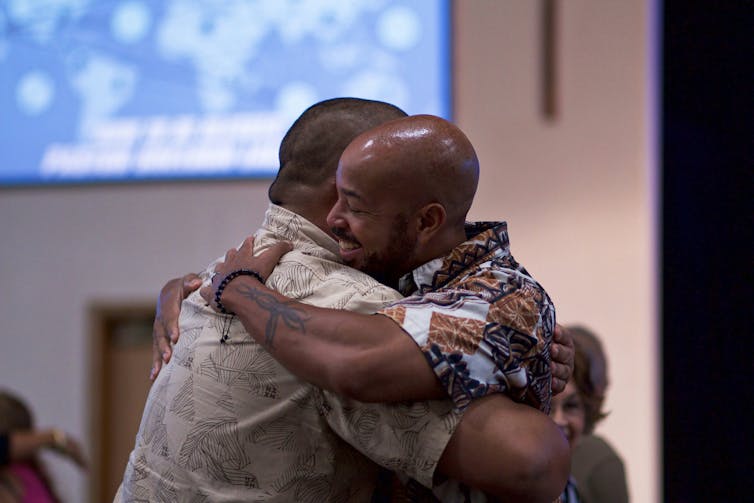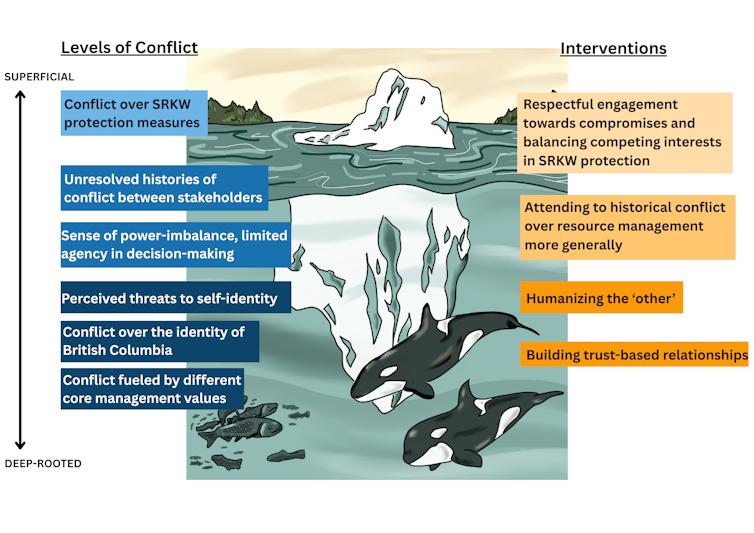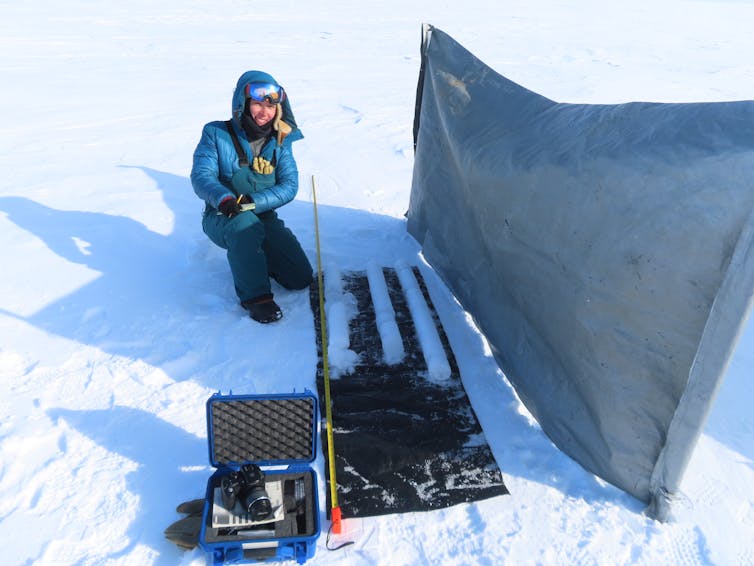Source: The Conversation – Canada – By Wendy Morgado Gamero, PhD candidate in Biology, McGill University

As climate change and human activity threaten freshwater ecosystems like lakes and rivers, it’s more important than ever to know how the species who inhabit them are being impacted. But traditional methods of monitoring species, such as catching animals, are challenging to implement and can miss rapid changes.
What if we could track life without capturing or directly observing individual animals? It turns out we can, by reading the DNA and RNA they leave behind in the water.
Every living thing leaves tiny traces in their environment — skin cells, waste or microscopic fragments we cannot see. These fragments carry genetic material unique to each species on Earth.
So, when scientists sample one bottle of water, a few grams of soil, or even filter the air, they are actually collecting what’s called environmental DNA (eDNA) or RNA (eRNA), which can tell us which species are (or have been) present in an area.
Recent studies have demonstrated that eRNA, previously considered too unstable for field use, can be reliably detected in freshwater ecosystems.
Our research
DNA molecules take time to completely disappear in the aquatic environment. That means eDNA might come from organisms living there now — or from ones that disappeared weeks ago.
However, RNA breaks down quickly. That fragility turns out to be an advantage: it gives us a snapshot of what’s alive and active in the moment, offering a powerful new way of tracking living organisms in real time.
At McGill University’s Gault Nature Reserve, researchers use the Large Experimental Array of Ponds (LEAP): 96 cattle-tank “ponds,” each holding about 1,000 litres of water drawn from nearby Lake Hertel. Known as mesocosms, they allow the researchers to test how freshwater communities respond to rapid changes in their environment like pH and temperature.
A mesocosm is a human-made outdoor tank that mimics a real freshwater ecosystem — big enough to include microbes, plankton and natural water, yet controlled so scientists can test isolated factors and repeat experiments. You can think of them as giant outdoor aquariums for science.
In our study, we worked with the large mesocosms at LEAP. We added a solution containing only DNA and RNA of water fleas (Daphnia pulex), a common freshwater organism absent from Lake Hertel, to the water mesocosm without the fleas themselves.
This allowed us to track how eDNA and eRNA behave across time once they enter the water. We subsequently transferred 10 per cent of the water volume into the next mesocosms, until reaching a dilution of 10,000 times of the eDNA and eRNA solution. We collected water samples starting right after we added the solution to the first tanks and continued for 24 days, nine times in total.
We used digital PCR to measure how DNA and RNA concentrations changed over time, a highly sensitive technology that can detect very low concentrations of genetic material. This method was also widely used during the COVID-19 pandemic to track the virus in wastewater. By applying it to our freshwater samples, we could precisely quantify how quickly DNA and RNA faded, and compare their persistence under the same conditions.
We also tested differences among RNA types: messenger RNA (mRNA), which carries short-lived instructions that tell cells how to make proteins, and ribosomal RNA (rRNA), which forms part of the cell’s protein-making machinery and is more stable.
What we found in the water
We discovered that RNA degraded much faster than DNA once it was released into the water. Interestingly, we observed differences among RNA types: mRNA degraded faster than rRNA.
Still, we were able to detect both DNA and RNA even after the water had been diluted 10,000 times across the mesocosms. This demonstrates that, even though RNA breaks down quickly, sensitive tools like digital PCR can still detect it, showing its potential for tracking active life in freshwater systems.
Our study demonstrates that environmental RNA — a molecule that disappears soon after an organism dies — can reveal recent biological activity in real time.
In particular, mRNA, the most fragile RNA, can provide a better snapshot of active life in aquatic systems. This provides scientists and environmental managers with a faster means of detecting changes and taking action to protect freshwater ecosystems.

(Vincent Fugère)
What eRNA can tell us next
Environmental RNA could reveal not only which species are currently alive, but also their health status or even their life stage. For example, one study demonstrated that changes in gene activity resulting from heat stress can be detected in mRNA from the water, providing information about the health of organisms in ecosystems.
Another study found that eRNA can distinguish between tadpoles and adult amphibians, making it possible to track life stages in the wild without needing to catch animals.
These findings suggest that eRNA could become a powerful, non-invasive tool for biodiversity monitoring. With further research, environmental RNA could help us not only track life in freshwater ecosystems, but also reveal how species are adapting in a rapidly changing world.
![]()
This study was supported by a Natural Sciences and Engineering Research Council of Canada (NSERC) Discovery Grant, the Genome Canada BIOSCAN–Canada initiative through the 2020 Large-Scale Applied Research Project Competition (Genomic Solutions for Natural Resources and the Environment), and the Government of Canada’s New Frontiers in Research Fund (NFRF).
Orianne Tournayre does not work for, consult, own shares in or receive funding from any company or organisation that would benefit from this article, and has disclosed no relevant affiliations beyond their academic appointment.
– ref. How environmental RNA can give us a real-time picture of freshwater biodiversity – https://theconversation.com/how-environmental-rna-can-give-us-a-real-time-picture-of-freshwater-biodiversity-263713






